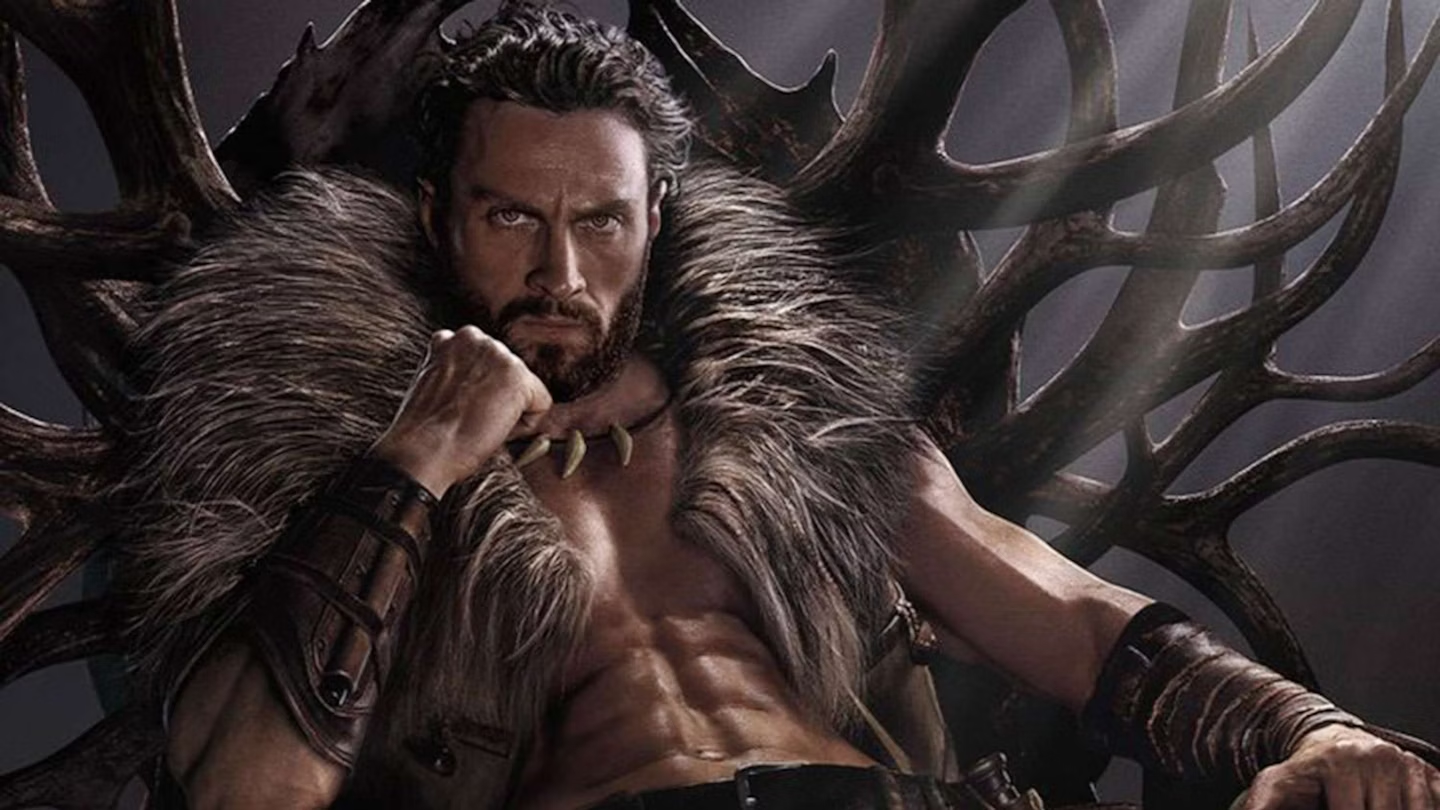Warning: Spoilers lurk in the Maze!
The third movie in the Maze Runner film series, The Death Cure finds hero Thomas and his band of misfit kids and outcast adults fighting the government agency WICKED, the apocalyptic virus known as The Flare, and sometimes even each other!
 So Minho (Ki Hong Lee) was one of the original Gladers, the kids who were forced to run through the Maze of the very first film, just like rats in a giant Tryon-like experiment. And Thomas (Dylan O’Brien), with Newt (Thomas Brodie-Sangster) and Brenda (Rosa Salazar) and Jorge (Giancarlo Esposito) and several other Flare survivors, are about to rescue Minho from a WICKED transport train – or so they think.
So Minho (Ki Hong Lee) was one of the original Gladers, the kids who were forced to run through the Maze of the very first film, just like rats in a giant Tryon-like experiment. And Thomas (Dylan O’Brien), with Newt (Thomas Brodie-Sangster) and Brenda (Rosa Salazar) and Jorge (Giancarlo Esposito) and several other Flare survivors, are about to rescue Minho from a WICKED transport train – or so they think.
 Even after all that, admittedly some very cool action sequences, the survivors still haven’t managed to get ahold of Minho, and he’s fully on WICKED’s radar now, so nothing would do but for Minho to get dropped back into the government’s experimental programs again, but with a twist – all that Maze and monster technology is being used to fry directly into Minho’s brain, who cares how it affects him so long as there are results in a working cure for the Flare.
Even after all that, admittedly some very cool action sequences, the survivors still haven’t managed to get ahold of Minho, and he’s fully on WICKED’s radar now, so nothing would do but for Minho to get dropped back into the government’s experimental programs again, but with a twist – all that Maze and monster technology is being used to fry directly into Minho’s brain, who cares how it affects him so long as there are results in a working cure for the Flare.
Teresa (Kayla Scodelario), that traitorous girl who rejoined WICKED when she learned the truth about the Maze and the Glade and the Flare, is now working on the cure in the last surviving human city left on earth (so they claim), alongside Ava Paige (Patricia Clarkson), who is still sadly employing Janson (Aidan Gillen), also known to the Gladers as the Rat Man, to do her necessary dirty work. Time is running out even for the people behind high city walls, as the virus known as the Flare is now airborne, and Paige estimates only a months time before every single last one of them is infected. Such news wipes the smirk right off Janson’s face and he plows into finding Thomas and his crew with renewed vigor.
 Thomas meanwhile, is actually headed right for the unnamed last city, but to get in there first he would need a guide who knows the place. This guide also happens to know the Flare world of the infected known colloquially as Cranks, and indeed, though he admits he deserved to be punished for his part in the Glade betrayals, Gally (Will Poulter) managed to survive, somehow.
Thomas meanwhile, is actually headed right for the unnamed last city, but to get in there first he would need a guide who knows the place. This guide also happens to know the Flare world of the infected known colloquially as Cranks, and indeed, though he admits he deserved to be punished for his part in the Glade betrayals, Gally (Will Poulter) managed to survive, somehow.
Time is running shorter than anyone realizes, especially when Newt is forced to reveal to Thomas the black veins climbing his arms, and meanwhile over there is WICKED central tower, Janson is preparing to basically de-brain Minho entirely, for the sake of getting a working cure for the Flare right now. A whole bunch of fiddling with various tags, marks, electronic sensors and spies has gone on by this point, but none of that seems to matter in the face of the stunning realization that Thomas, basically the Chosen One, the little rebel WICKED has been trying hard to take out for some time now, will be the one whose blood saves literally everyone. But there’s always time for a few last zinging reveals that won’t land quite right unless you’re a true fan of the entire Maze Runner series, and give a flip about things like character motivation and backstory.
 This third film of the series is actually pretty good, certainly better than Scorch Trials, which was effectively a whole lot of nothing in the burned desert with wanna-be zombies. The action scenes are terrific without sliding into Michael Bay overkill territory, and all the actors deliver fine performances for their characters, who seem to have gotten a bit of an upgrade, in both tone and depth. It’s as though the filmmakers kind of went, ‘Oh yeah, we still make these Maze Runner movies, don’t we? Can we please make a new one that’s better than the last one?’ It actually worked, and if you’re any kind of fan of the Maze and its kids, you should see Death Cure in theaters right now!
This third film of the series is actually pretty good, certainly better than Scorch Trials, which was effectively a whole lot of nothing in the burned desert with wanna-be zombies. The action scenes are terrific without sliding into Michael Bay overkill territory, and all the actors deliver fine performances for their characters, who seem to have gotten a bit of an upgrade, in both tone and depth. It’s as though the filmmakers kind of went, ‘Oh yeah, we still make these Maze Runner movies, don’t we? Can we please make a new one that’s better than the last one?’ It actually worked, and if you’re any kind of fan of the Maze and its kids, you should see Death Cure in theaters right now!
Get infected with ‘Maze Runner The Death Cure’, in theaters now!

Movie
‘Mufasa: The Lion King’ Will Leave You Breathless

“Mufasa: The Lion King” is a visually stunning addition to the beloved Lion King franchise, offering a fresh and emotionally resonant take on the origins of one of Disney’s most iconic characters. The film beautifully explores Mufasa’s journey, balancing heartfelt moments with touches of comedy that lighten the mood and make the story accessible to audiences of all ages. The animation is breathtaking, capturing the vibrant landscapes and lush environments of the Pride Lands, adding depth to Mufasa’s character and his relationships.
The storytelling is compelling, effectively pulling at the heartstrings while providing insights into Mufasa’s character before he becomes the legendary king. However, the setup for Scar’s betrayal feels somewhat underdeveloped, lacking the deeper motivation that could have enriched their complex brotherly relationship. This missed opportunity leaves a slight gap in understanding Scar’s actions, which could have elevated the dramatic stakes.
The musical score is impressive, featuring memorable songs that enhance the emotional impact of pivotal scenes. While there are several standout tracks, one song, in particular, resonates deeply and is sure to linger in viewers’ minds long after the credits roll. Overall, “Mufasa: The Lion King” is an amazing film and a worthy addition to the Lion King lore that manages to deliver both laughter and tears, offering a rich tapestry of storytelling that fans will appreciate.
Movie
Is ‘Kraven the Hunter’ a Total Letdown?

“Kraven the Hunter,” directed by J.C. Chandor, aims to introduce a beloved Spider-Man villain to the big screen, but unfortunately, it falls short of expectations. The film suffers from noticeable issues, notably an overuse of ADR (Automated Dialogue Replacement), which detracts from the authenticity of the characters’ interactions and contributes to an uneven audio experience. This technical flaw is compounded by rough storytelling that feels disjointed and lacking in coherence, leaving viewers struggling to connect with the narrative.
Aaron Taylor-Johnson delivers a commendable performance as Kraven, showcasing the character’s gritty nature and complex motivations. His portrayal has potential, and it’s evident that he could elevate the character far beyond what is presented with a stronger script and direction. However, the absence of Spider-Man, a central figure in Kraven’s lore, leaves a void that the film struggles to fill. Without this critical connection, the plot meanders and fails to create the tension or stakes that fans of the superhero genre crave.
Additionally, including Rhino as a villain feels like a missed opportunity; he is presented more as a gag character with limited screen time, undermining any sense of threat or depth. For the average moviegoer, “Kraven the Hunter” might entertain but ultimately feels like a mediocre viewing experience. Comic book fans, however, may find disappointment in this lackluster attempt to create a solo character film. Instead of an exhilarating dive into Kraven’s world, the film presents a watered-down version, leaving audiences wishing for a more cohesive vision that honors its comic book roots.
Movie
A Brief Review and History of A Year Without a Santa Claus

A Year Without a Santa Claus, the 1974 stop-motion holiday classic produced by Rankin/Bass, is a heartwarming and whimsical tale that has cemented its place in holiday traditions. Based on Phyllis McGinley’s 1956 book, the story revolves around a disheartened Santa Claus who, feeling unappreciated, decides to take a year off from his Christmas duties. It’s up to Mrs. Claus and a pair of well-meaning elves, Jingle and Jangle, to reignite the Christmas spirit and show Santa the world’s unwavering belief in him.
The movie is beloved for its unforgettable characters, especially the bickering Miser Brothers, Snow Miser and Heat Miser. Their catchy, vaudeville-style musical numbers, “Snow Miser Song” and “Heat Miser Song”, are so iconic they’ve become cultural touchstones, often parodied and celebrated decades later.
Directed by Arthur Rankin Jr. and Jules Bass, the film continues the duo’s tradition of stop-motion magic, blending heartfelt storytelling with quirky humor. The voice cast, featuring Mickey Rooney as Santa and Shirley Booth as Mrs. Claus, delivers standout performances. Booth’s warm narration was her final acting role before retirement, adding a layer of poignancy to the film.
Initially released on December 10, 1974, on ABC, the special didn’t immediately achieve the legendary status of Rudolph the Red-Nosed Reindeer. However, it gained a dedicated following through annual holiday airings, nostalgic appeal, and its distinct charm.
The film’s themes of hope, unity, and rekindling joy remain timeless, making it a perennial favorite for audiences of all ages. Its blend of humor, catchy songs, and a touching message about believing in magic and goodwill ensures its enduring legacy during the holiday season.
For fans of holiday classics, A Year Without a Santa Claus is a must-watch that never fails to warm hearts and spread cheer.

